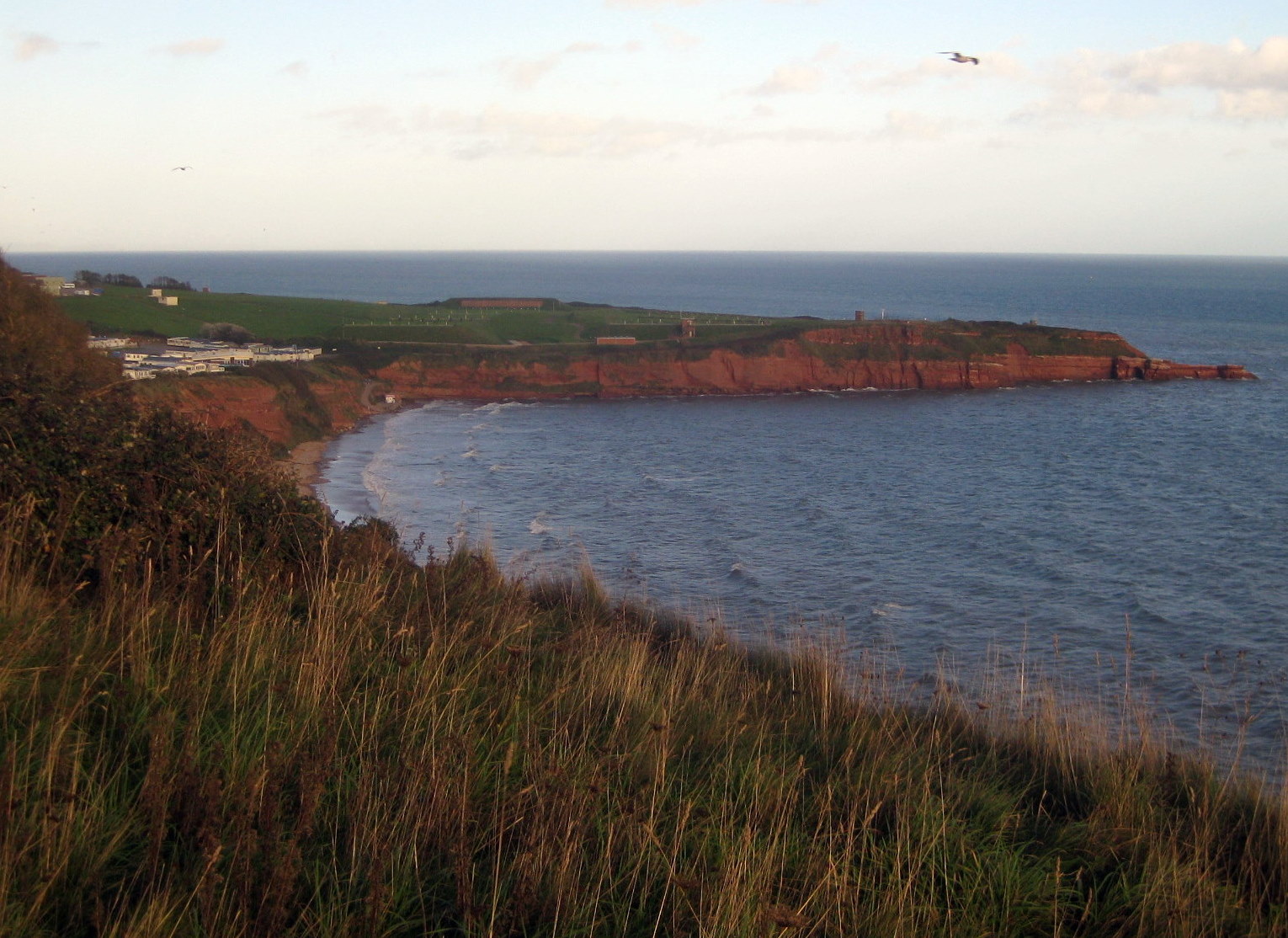Straight Point on:
[Wikipedia]
[Google]
[Amazon]
 Straight Point is a coastal region, forming a
Straight Point is a coastal region, forming a
 Straight Point is a coastal region, forming a
Straight Point is a coastal region, forming a headland
A headland, also known as a head, is a coastal landform, a point of land usually high and often with a sheer drop, that extends into a body of water. It is a type of promontory. A headland of considerable size often is called a cape.Whittow, John ...
, between Exmouth
Exmouth is a harbor, port town, civil parishes in England, civil parish and seaside resort, sited on the east bank of the mouth of the River Exe and southeast of Exeter.
In 2011 it had a population of 34,432, making Exmouth the List of town ...
and Budleigh Salterton
Budleigh Salterton is a seaside town on the coast in East Devon, England, south-east of Exeter. It lies within the East Devon Area of Outstanding Natural Beauty, and forms much of the electoral ward of Budleigh, whose ward population at t ...
in Devon
Devon ( , historically known as Devonshire , ) is a ceremonial and non-metropolitan county in South West England. The most populous settlement in Devon is the city of Plymouth, followed by Devon's county town, the city of Exeter. Devon is ...
on the south coast of England
England is a country that is part of the United Kingdom. It shares land borders with Wales to its west and Scotland to its north. The Irish Sea lies northwest and the Celtic Sea to the southwest. It is separated from continental Europe b ...
.
Location
Straight Point is about south of the city ofExeter
Exeter () is a city in Devon, South West England. It is situated on the River Exe, approximately northeast of Plymouth and southwest of Bristol.
In Roman Britain, Exeter was established as the base of Legio II Augusta under the personal comm ...
, southeast of Exmouth and about southwest of Sidmouth.
The top of the headland is used by the Royal Marines as a firing range. To the west is Sandy Bay, a holiday beach, that can be reached either along the coastal path or through the large caravan park. To the east are Otter Cove and Littleton Cove.
Geology
The redsandstone
Sandstone is a clastic sedimentary rock composed mainly of sand-sized (0.0625 to 2 mm) silicate grains. Sandstones comprise about 20–25% of all sedimentary rocks.
Most sandstone is composed of quartz or feldspar (both silicates) ...
cliffs at Straight Point show an interesting sequence of sandstones in the Exmouth Formation. Most of the western section is accessible at low tide from Sandy Bay. Only a small part of the eastern side is accessible at low tide. Predominantly the cliffs are composed of layers of "Aylesbeare Mudstone", but additionally with these sandstone Layers. These rock formations are important because they represent the earliest geology along the entire coast. They are from the Triassic period and date from 250 million years ago. Both sediments are markedly red, which indicates that they were formed in a desert.
References
{{coord, 50.60660, -3.36177, display=title Bays of Devon Jurassic Coast Geology of Devon